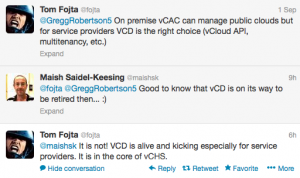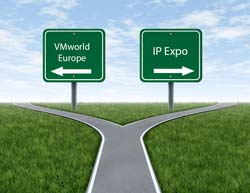For the last couple of years adoption of ‘converged infrastructure’ has been on the rise but until recently it wasn’t something I’d needed to understand beyond general market awareness and personal curiosity. I was familiar with some of the available solutions (in particular VCE’s vBlock and Netapp’s Flexpod) but I also knew there were plenty of other converged solutions which I wasn’t so familiar with. When the topic was raised at my company I realised that I needed to know more.
Google research quickly found a converged infrastructure primer at Wikibon which had the quotable “Nearly 2/3rds of the infrastructure that supports enterprise applications will be packaged in some type of converged solution by 2017“. The Wikibon report is well worth a read but it didn’t quite answer the questions I had, so I decided to delve into the various solutions myself. Before I continue I’ll review what’s meant by ‘converged infrastructure’ with a Wikipedia definition;
Converged infrastructure packages multiple information technology (IT) components into a single, optimized computing solution. Components of a converged infrastructure solution include servers, data storage devices, networking equipment and software for IT infrastructure management, automation and orchestration.
In a series of blogposts over the coming months I’m planning to summarize the converged offerings from various vendors including VCE, Netapp, HP, Oracle, IBM, Dell, Hitachi. If I find time I’ll also cover the newer ‘hyperconverged’ offerings from Nutanix, Scale Computing, Pivot3 and Simplivity. This is largely for my own benefit and as a record of my thoughts – there’s quite a bit of material out there already so it may turn into a compilation of links. I don’t want to rediscover the wheel!
Q. Will this series of blogposts tell you which converged solution you should choose?
A. Nope. There are many factors behind these decisions and I (unfortunately) don’t have real world experience of them all.
CI solutions vary considerably in their degree of convergence and use cases. Steve Chambers (previously of VCE, now CanopyCloud) has a good visualisation of the various solutions on a ‘convergence’ scale. If you haven’t read it already I’d strongly recommend you do so before continuing.
Why converged infrastructure?
Before I delve into the solutions let’s have a look at some factors which are common to them all – there’s no point looking at any solution unless you know how it’s going to add value.
- Management. The management and orchestration tools are often what add real value to these solutions and that’s typically the component that people aren’t familiar with. Run a POC to understand how effective these new tools are. Do they offer and API?
- Simplicity – validated architectures, preconfigured and integrated stacks of hardware and software, and built in automation all promise to ease the support burden of deploying and operating infrastructure. Who do you call to resolve problems? Will you be caught between vendors blaming each others components or is there a single point of contact/resolution? While a greenfield deployment may be simpler, if you add it to the existing mix (rather than as a replacement) then you’ve added complexity to your environment, and potentially increased your TCO rather than reduced it. Changes to existing processes may also impact job roles – maybe you won’t need a storage admin for example – which can be a benefit but may require considerable change and entail uncertainty for existing staff.
- Flexibility – Is deploying a large http://premier-pharmacy.com/product/viagra/ block of compute/network/storage granular enough for your project? Many vendors are now producing a range of solutions to counter this potential issue. While deployment may be quicker, consider ongoing operations – because the engineered systems need to be validated by the vendor you may not be able to take advantage of the newest hardware or software releases, including security patches. For example Oracle’s Exalogic v2, released in July 2012, ships with Linux v5 despite v6 being released in February 2011. The CPU’s were Intel’s Westmere processors (launched in Jan 2011) instead of the E5 Romley line which were released in March 2012. This isn’t just Oracle – to varying degrees this will hold true for any ‘engineered’ system.
- Interoperability. Can you replicate data to your existing infrastructure or another flavour of converged infrastructure? What about backups, monitoring etc – can you plumb them into existing processes and tools? Is there an API?
- Risk. CI solutions can reduce the risk of operational issues – buy a 100 seat VDI block which has been designed and pretested for that purpose and you should be more confident that 100 users can work without issue. But what if your needs grow to 125 VDI users? Supplier management is also a factor – if a single vendor is now responsible for compute, networks, and storage, vendor lock in becomes more significant but consolidating vendors can also be a benefit.
- Cost. CI is a great idea and easy to grasp concept but there’s no such thing as a free lunch – someone is doing the integration work (both software and hardware) and that has to be paid for. CI solutions aren’t cheap and tend to have a large initial outlay (although Oracle have recently announce a leasing scheme which some are sceptical of!) so may be more suited to greenfield sites or larger projects. TCO is a complex issue but also bear in mind support costs – engineered systems can be expensive if you need to customize them after deployment. CI system’s integrated nature may affect your refresh cycle and have an impact on your purchasing process.
- Workload. Interestingly virtualisation promised a future where the hardware didn’t matter but the current bundling of CI solutions could be seen as a step backwards (as eloquently described by Theron Conrey in this blogpost ‘Is converged infrastructure a crutch?‘). There’s an interesting trend of extending the convergence through to the application tier as seen in Oracle’s Exadata/Exalogic, VCE’s’specialised’ solutions (SAP Hana etc) and Netapp’s Flexpod Select solutions. This promises certification/validation through the entire stack but does raise an interesting situation where the application teams (who are closer to the business) increasingly influence infrastructure decisions…
There’s a thought provoking article at Computer Weekly discussing modular datacentres which takes the converged concept even further. Why bolt together building blocks in your datacentre when you can buy a complete datacentre in a box. Convergence on a larger scale! Next thing you know they’ll be using shipping containers for datacentres… 🙂
Further Reading
Converged infrastructure primer (Wikibon)
Management of converged infrastructures (the Virtualization Practice)
Engineers Unplugged session on hyperconverged infrastructure (7 mins)
The Future of Convergence think tank (2hr video)
EMC’s white paper “Time for Converged Infrastructure?” – some good points but with an obvious bias
Containerized datacenters – is a box a good fit?
Converged infrastructure and Object Oriented programming
The state of Converged infrastructure (Zenoss 2013 survey results)






 With VMworld in San Francisco, which I couldn’t attend, now a distant memory my thoughts have turned to attending the European replay
With VMworld in San Francisco, which I couldn’t attend, now a distant memory my thoughts have turned to attending the European replay